There’s this video I saw of a professional chef answering questions from home cooks – someone wanted to know the best way to remove the seeds from a pomegranate.
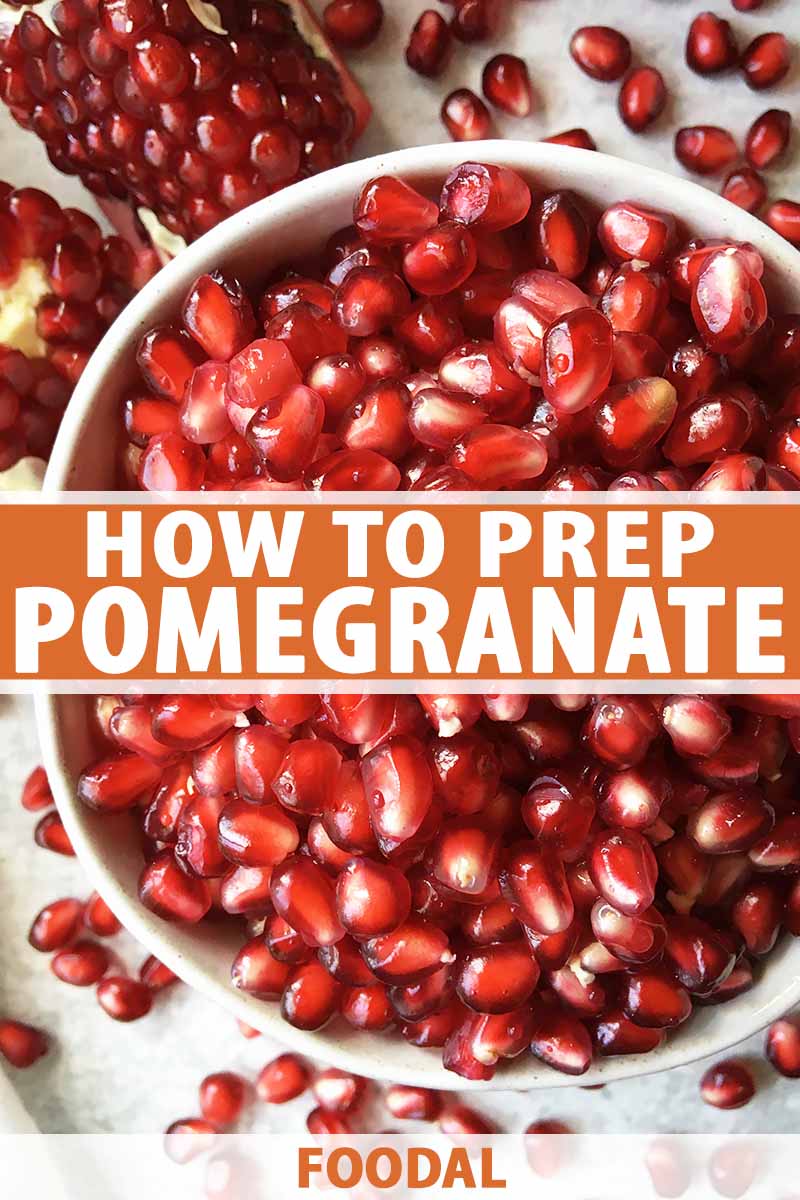
In jest, he picked up a whole pomegranate, squeezed it ridiculously hard until it burst all over his hand, and released a bloodied, pulpy mess of juice, squished seeds, and skin.
Ick.
Look, chef… I get it. Pomegranates are weird to prep.
You’re dealing with this odd grenade with a hard, outer skin and super juicy seeds on the inside whose liquids explode everywhere like shrapnel if you try to remove them the wrong way.
Woe is the cook who wears white!
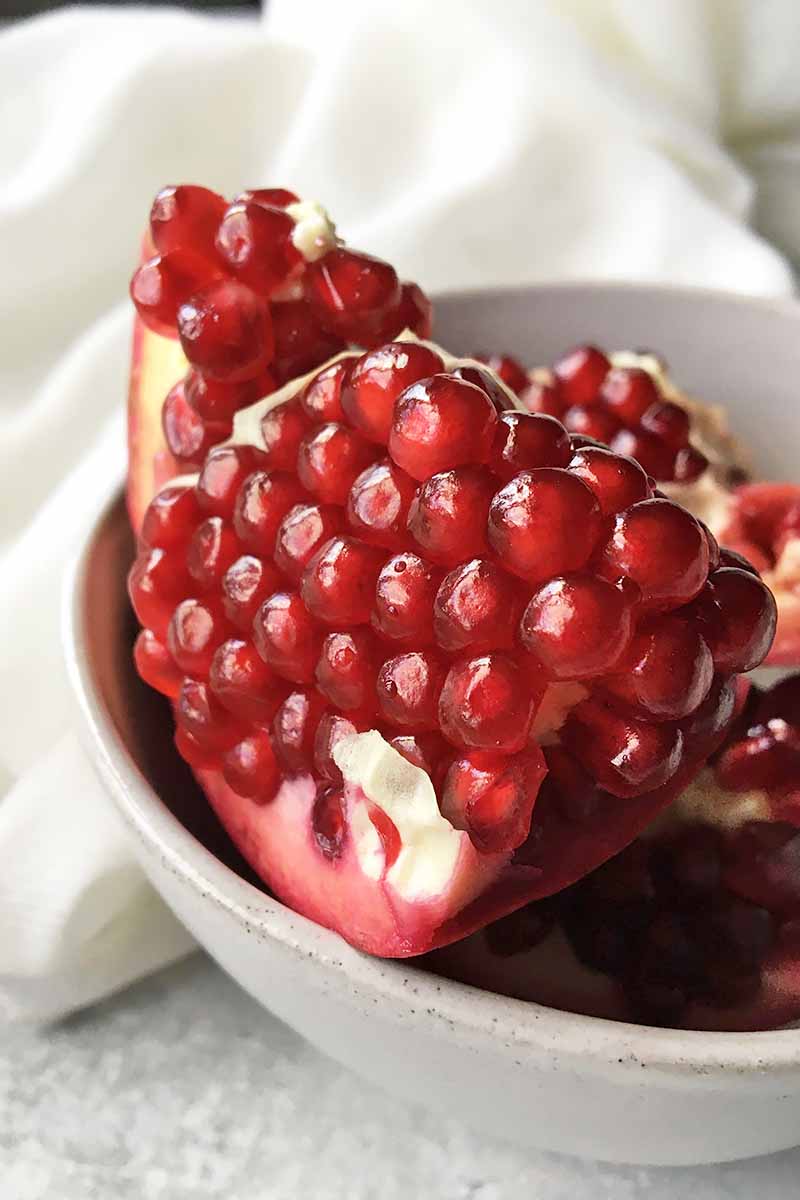
Rather than cover your work station (and yourself) in juice as if you were in a scene from Carrie, try Foodal’s easy method to cleanly and quickly prep a pomegranate.
We’ll teach you how to select and store this fruit, and our preferred way to remove the seeds without making a huge mess!
How to Select
When picking a pomegranate at the store, look beyond the color. Color is not the best factor for determining the best of the bunch. The color will vary in hue, anywhere from dark red to a light, pink.
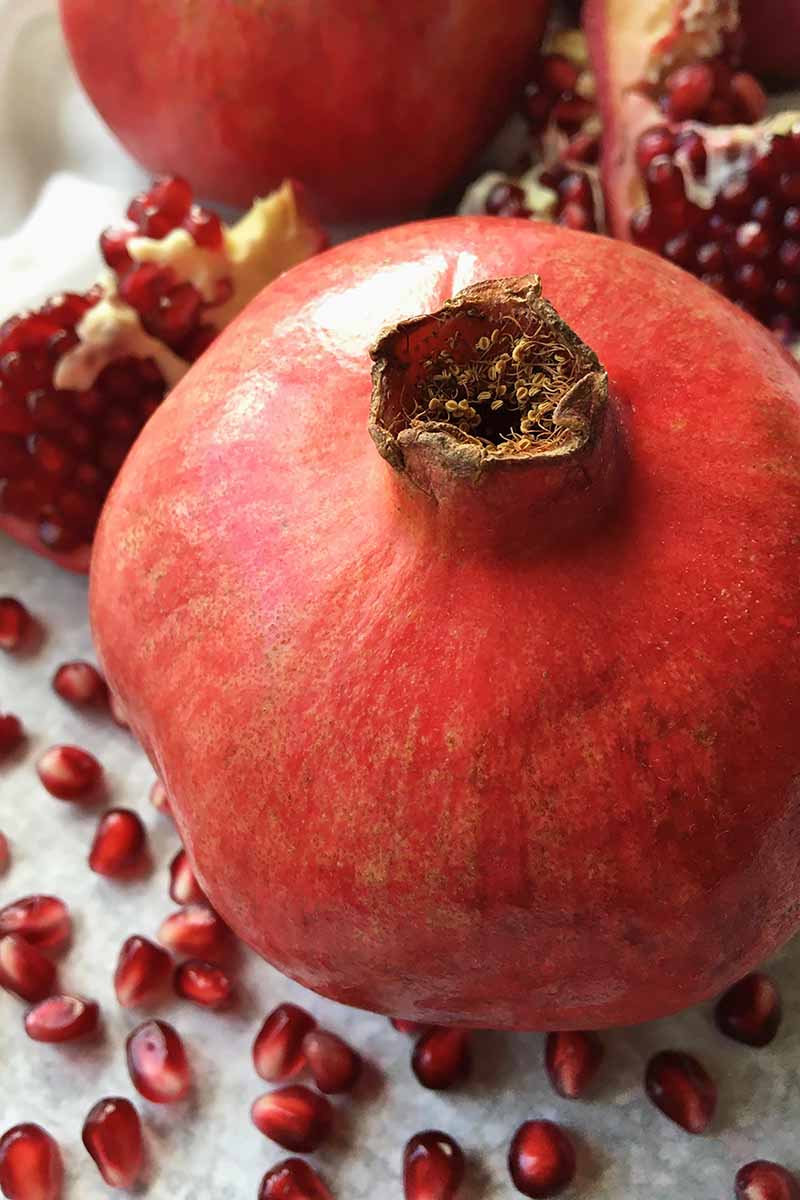
What you need to do is rely on touch. Hold each one and test for any soft areas. The skin should be very firm, with no large bruised, soft, and mushy areas. Soft spots will more than likely have soggy, browned seeds underneath.
It’s completely fine if the skin has some discoloration or scrapes, just as long as any blemishes are superficial, and have not penetrated through the skin.
They should be dry, and shouldn’t be seeping any liquids.
You also want to select heavier pomegranates – the heaviness is an indicator of many super juicy, delicious seeds (which are technically arils, a fleshy exterior that surrounds an interior seed – we’ll use both terms interchangeably).
How to Store
If you will be using it within a couple days (2 to 3 days, if you want specifics), you can store the whole fruit at room temperature away from any direct sunlight.

If using any later than a couple days, store the whole fruit in the refrigerator in the vegetable/fruit drawer for a little over a week.
How to Remove the Seeds
Step 1 – Prep
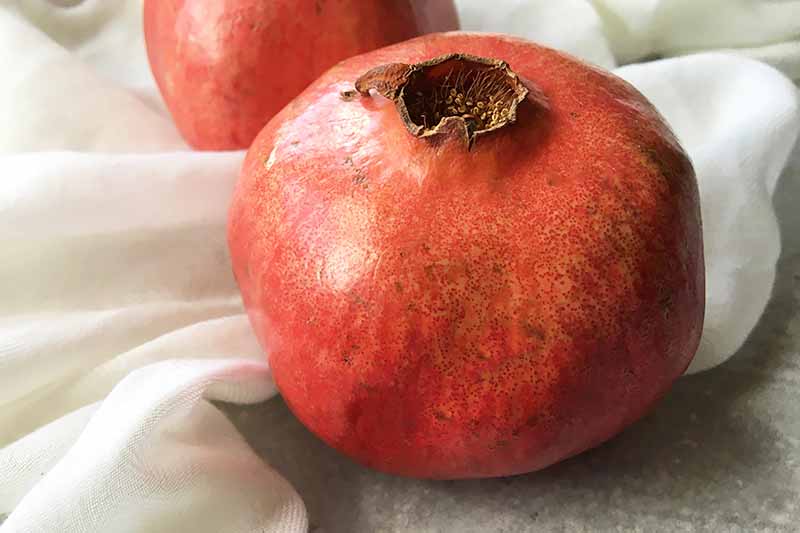
Set out a sharp paring knife, cutting board, a large bowl filled with cold water, and a large empty bowl. Keep a rag nearby to clean up any juice.
Oh, yes… and don’t wear white. While our method greatly minimizes the amount of juice released from the arils, it’s only natural that some juice and a few rogue seeds will still escape. To avoid any bright red stains that are next to impossible to remove, wear an apron and dark-colored clothing!
Wash the whole fruit with cold water. Dry with a clean towel.
Step 2 – Score and Remove Top
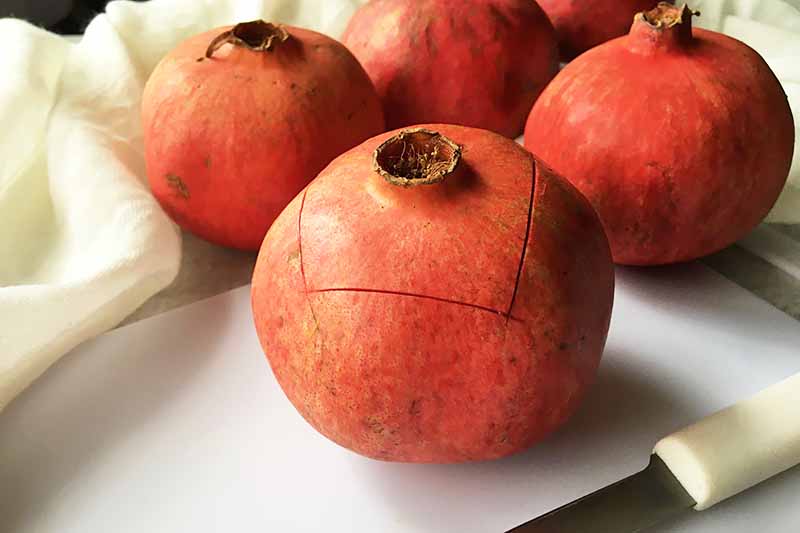
With the sharp paring knife on the cutting board, make shallow cuts around the top of the pomegranate without cutting too deeply into the interior. You’ll want to cut about a 3/4-inch diameter all around from the center of the pomegranate.
A dull knife will be your enemy – you need a well-sharpened knife to cleanly cut through the hard skin of the fruit.
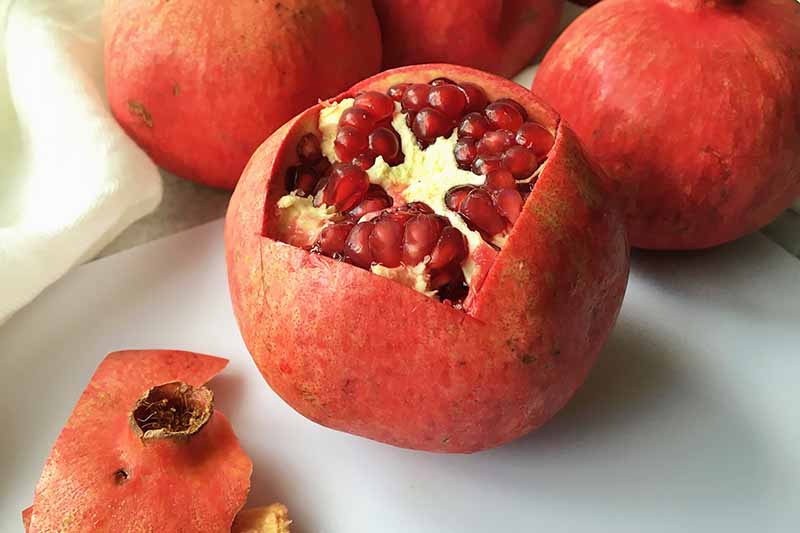
Gently pull off the center section you cut, exposing the arils underneath. You may need the tip of your knife to pry open the center cut.
Step 3 – Score the Sides
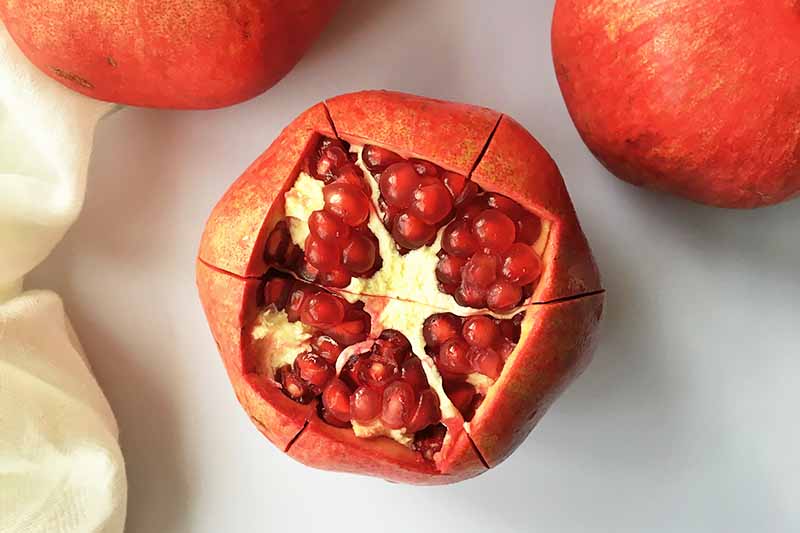
Take a look at the exposed surface. You’ll see thin, white membranes separating sections of arils, similar to the membranes that separate citrus fruit into segments.
Using the white membranes as your guides, score lines along the exterior of the pomegranate from the top to the bottom. You’ll end up with 6-ish scored lines about 2 inches apart from each other, depending on how large the fruit is.
Are the membranes not visible? Not a problem! This method will work even if you don’t have the membranes as your guidelines for where you should cut. Still score 6 or so lines about 2 inches apart from each other around the pomegranate from the top to the bottom of the fruit.
Step 4 – Rip the Sections Apart
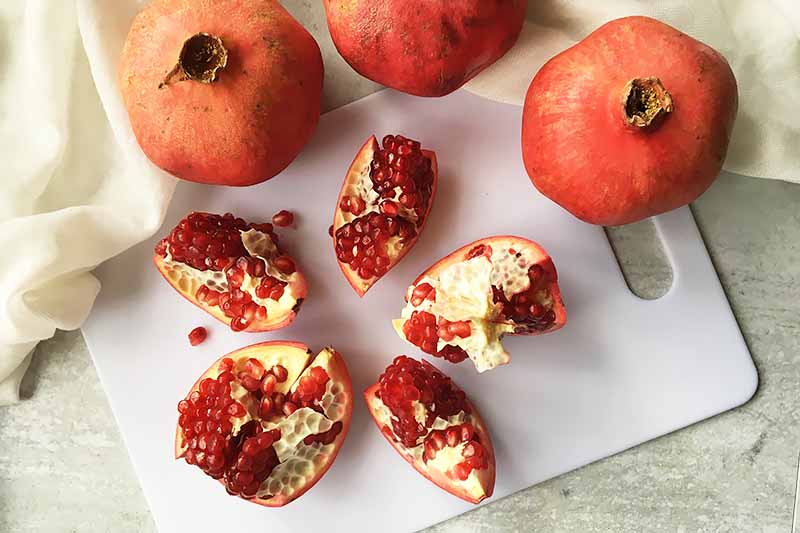
Gently rip open the segments you scored, pulling each section with your fingers.
Completely separate each section from each other.
Step 5 – Remove Seeds
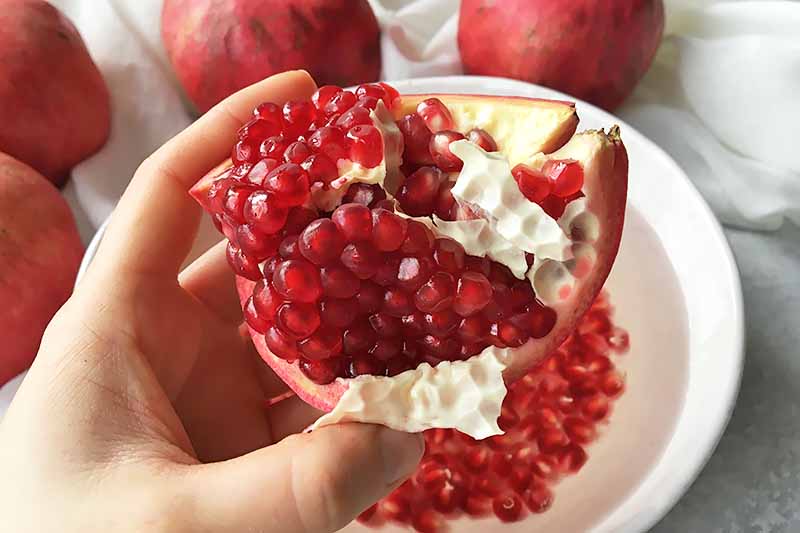
Working over the bowl with the water, use your fingers to pick out the seeds in each section and drop them in the water.

The water helps to separate any excess membrane. The membranes will float, while the seeds sink to the bottom. Pick out any remnants of membrane with a fork or a small fine mesh strainer.
An alternative popular method of removing the seeds from the sections is to hit the skin side of each section with a large stirring spoon to cause them to pop out. However, I find this method inadequate. While it removes some of them, at least the exposed exterior seeds, you will still need to use your fingers to pick out the majority of them hiding in all of the interior nooks and crannies of the membrane.
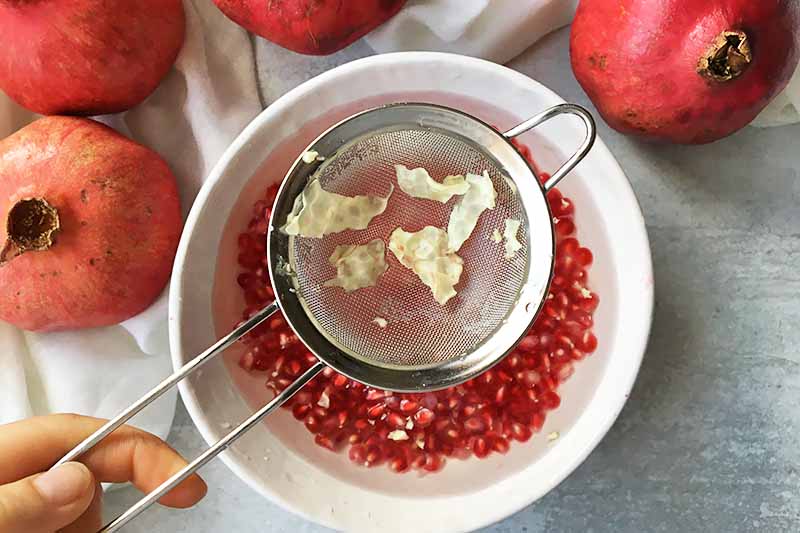
There are many sections inside a pomegranate, many little caves and crevices that house hiding seeds. I find it best to just stick with picking them out with your fingers, start to finish!

Once you have removed all of the excess membrane, drain the pomegranates from the water with a strainer or a colander with small holes.
Shake the strainer a few times to remove as much excess water as possible.
Step 6 – Use and Store
Aaaaaaand… you did it! No big mess! You should now have 1 cup or so of beautiful seeds. Repeat with as many fruit as you wish!
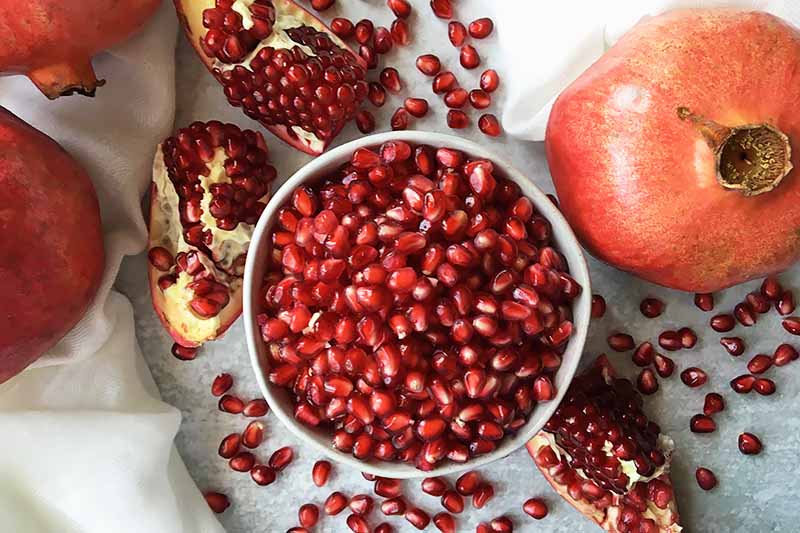
If not using immediately, store them in an airtight container in your refrigerator for up to 5 days.
Add a Fruity Pop of Flavor to Your Recipes!
With the right technique and a sharp knife, getting a beautiful bowlful of those juicy, crunchy bites of joy is simple.
If you’re able to resist eating them on their own as a tasty snack, there are many amazing options to show off those ruby arils in a variety of recipes. Garnish sweet cupcakes and dark chocolate ganache tarts with them, use them to make ice cream pop, mix them in cookie dough, and add them in fresh salads.
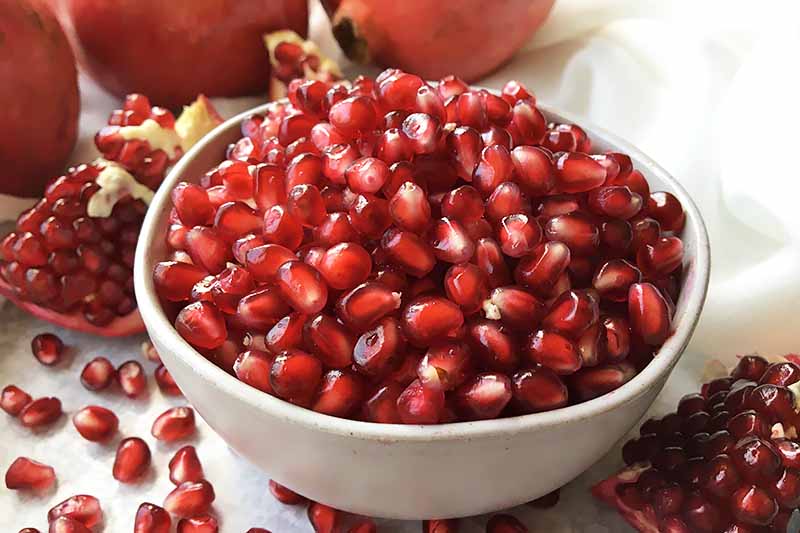
Here are some of our favorite recipes we would love for you to try the next time you have some juicy pomegranate seeds:
- Chocolate Pomegranate Oatmeal Cookies
- Pomegranate Chocolate Ganache Cupcakes
- Satsuma Mandarin Orange, Red Onion, and Pomegranate Salad
Do you have any tried and true methods to prep pomegranates? How do you minimize the amount of juice released from the fruit? If you have any additional advice, feel free to leave a comment below!
Photos by Nikki Cervone, © Ask the Experts, LLC. ALL RIGHTS RESERVED. See our TOS for more details.
About Nikki Cervone
Nikki Cervone is an ACS Certified Cheese Professional and cheesemonger living in Pittsburgh. Nikki holds an AAS in baking/pastry from Westmoreland County Community College, a BA in Communications from Duquesne University, and an MLA in Gastronomy from Boston University. When she's not nibbling on her favorite cheeses or testing a batch of cupcakes, Nikki enjoys a healthy dose of yoga, wine, hiking, singing in the shower, and chocolate. Lots of chocolate.

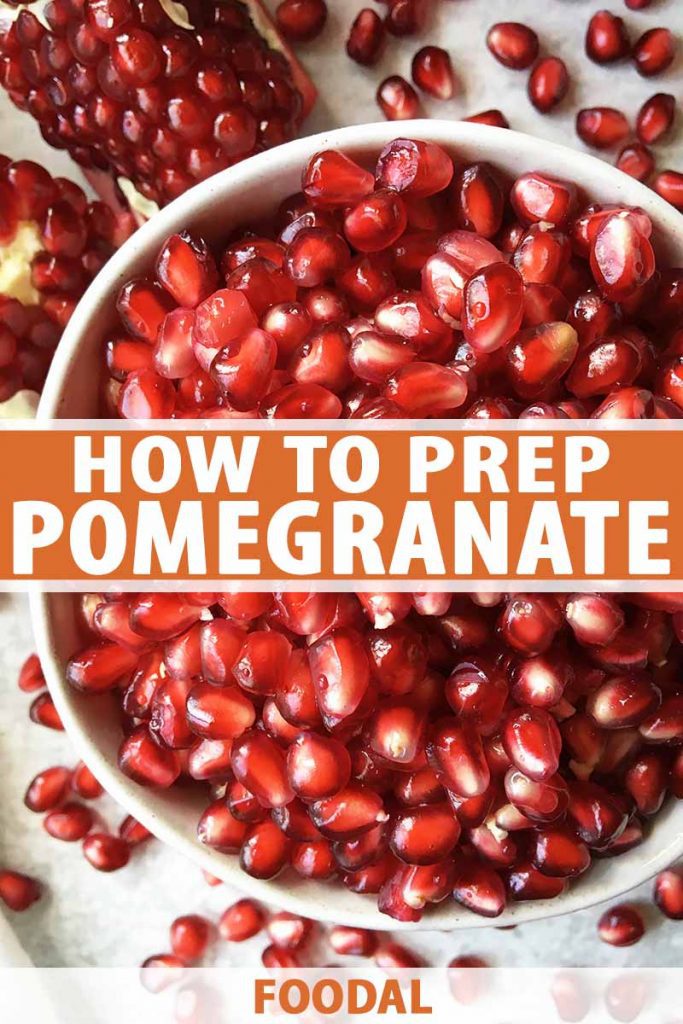



I am 93 years of age and have always avoided pomegranates because they seemed so messy. After coming across Nikki Cervone’s method by a fluke, I can’t wait to buy some pomegranates and try this, because I LOVE those seeds and will serve them, too.
Thank you, Nikki!